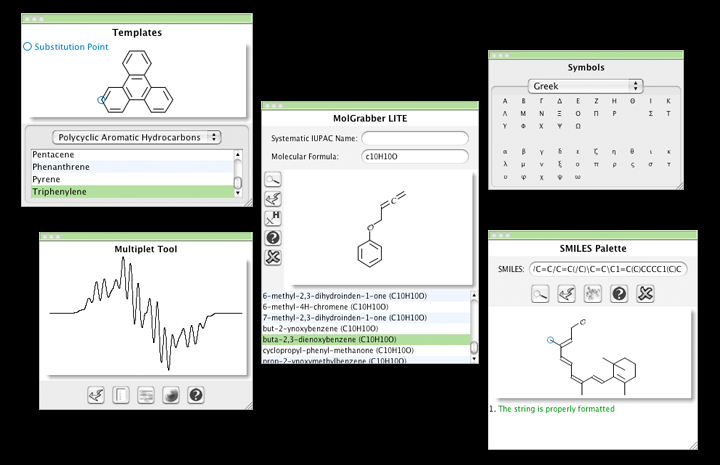

The deep integration of HTML, CSS and JS in the browser creates a seamless user experience, and
Chemdoodle web perspective canvas code#
There are fewer security concerns since the code is sand-boxed in the browser, JS applications are quick to load without the overhead of 3rd party plugins, Installation or updates are not required since JS is enabled in browsers by default, Using web standard technology has a number of advantages over 3rd party plugins like Java applets and Flash: The CWC source code follows JS best practices to ensure maintainability and cross-compatibility with other libraries and frameworks.
Chemdoodle web perspective canvas license#
CWC is made available under the free and open source, GNU GPLv3 license and is accompanied by detailed documentation and commercial support packages. The ChemDoodle Web Components library, released in 2009, is the first chemistry toolkit for structure viewing and editing that is originally built using only web standard technologies, HTML5, CSS, and JS, and is accordingly supported by all modern desktop and mobile browsers. The ChemDoodle Web Components technology stack and features Mobile browsers did support HTML5, which opened the door to web applications built with only HTML, CSS and JavaScript (JS), such as the ChemDoodle Web Components. In 2007 however, the hardware landscape changed dramatically with the introduction of mobile devices that did not support third party plugins such as Flash or Java applets. JME, a molecular editor, was later integrated into Jmol to add chemical structure upload and editing functionality. In 2004 Jmol, a Java applet, was released to replace Chime and provide an open source and operating system independent solution to the growing number of web browsers. Based on the molecular visualization program RasMol, Chime was developed as a plugin for Netscape and later for Internet Explorer and Firefox. The first chemical graphics toolkit for the web, MDL Chime, was introduced in 1996. Companies that implement emerging web technologies can find efficiencies and benefit from competitive advantages. Learning management systems, virtual classrooms and MOOCs are a few examples where chemistry educators need forward compatible tools for digital natives.


sy2), Tripos Sybyl Line Notation (.sln), Beilstein ROSDAL (.ros), XYZ Files (.How we communicate chemical information is increasingly technology driven. mmod), Schrödinger Maestro (.mae), Standard Molecular Data (.smd), Tripos Mol2 (.mol2. ent), RCSB Protein Data Bank Markup Language (.xml. mmcif), RCSB MacroMolecular Transmission Format (.mmtf), RCSB Protein Data Bank Files (.pdb. rd), MDL RXNFiles, both V2000 and V3000 connection tables (.rxn), MMI SketchEl Molecule (.el), Molinspiration JME String (.jme), RCSB Binar圜IF (.bcif), RCSB Macromolecular Crystallographic Information File (.cif. dx), ISIS Sketch File (.skc), ISIS Sketch Transportable Graphics File (.tgf), MDL MOLFiles, both V2000 and V3000 connection tables (.mol. smiles), IUPAC InChI (.inchi), IUPAC JCAMP-DX (.jdx. Read and write many popular chemical file types for working with the applications you use:ĪCD/ChemSketch Documents (.sk2), ChemDoodle Documents (.icl), ChemDoodle 3D Scenes (.ic3), ChemDoodle Javascript Data (.cwc.js), CambridgeSoft ChemDraw Exchange (.cdx), CambridgeSoft ChemDraw XML (.cdxml), Crystallographic Information Format (.cif), CHARMM CARD File (.crd), ChemAxon Marvin Document (.mrv), Chemical Markup Language (.cml), Daylight SMILES (.smi. Algorithmic Analysis of Cahn−Ingold−Prelog Rules of Stereochemistry: Proposals for Revised Rules and a Guide for Machine Implementation. and is 100% accurate in all 300 test cases provided. The CIP algorithm in ChemDoodle is validated against the test suite provided by Hanson et. Stereochemical features in your structures will be assigned "R", "S", "E", "Z", "M" and "P" descriptors. to remove any ambiguities and describe a completely consistent system for CIP assignments.ĬhemDoodle implements all 6 current CIP rules as well as auxilliary desciptors and mancude ring support. The most recent CIP rules from IUPAC were then algorithmically analyzed and standarized by Hanson et al. These rules were adopted by IUPAC for naming standards and fully described in the Blue books. While flawed, they have seen many revisions over the decades and were clarified by the work of Paulina Mata. The CIP rules have long been the standard for describing configurations of stereochemical features in a molecule.


 0 kommentar(er)
0 kommentar(er)
